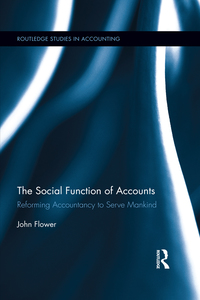

A coastal wetlands area in New York is to be developed with condominium complex. As shown in Fig. 1, the ground surface is at an elevation of 3 feet above mean sea level (MSL). The soil profile for the site, shown in Fig. 1, consists of marine clay layer underlain by silty sand. The sand layer beneath the clay is sufficiently pervious that the clay can be considered double- drained. Twenty acres of the site are to be developed by placing a sand fill (Y. = 115 pcf) to raise the elevation of the site to at least +10 feet MSL. The elevation of +10 feet MSL is to correspond to conditions after 5 years. Buildings at the site will be light, two-story, woodframe buildings with slab-on-grade foundations with base pressures of 200 psf. These buildings have maximum settlement tolerance of 6 inches, meaning that after the construction of the buildings, the maximum amount of allowable settlement is 6 inches. Based on the above project descriptions and the information in Fig. 1, please answer the following: 1. On the same graph, plot the following as a function of depth (before placement of fill): total vertical stress (0,), pore water pressure (u), effective vertical stress (0), and preconsolidation pressure (0). Next to this graph, draw a plot of OCR vs. depth. Does this appear reasonable (explain briefly)? 2. What depth of fill would be needed to assure a final elevation of +10 feet MSL after 5 years? For this calculation you can neglect secondary compression. 3. If no site remediation is performed, how long would the developer need to wait after fill placement before construction of the condominiums (in order to maintain settlements less than 6 inches from primary consolidation)? 4. Based on the above calculations, you probably have come to the conclusion that (1) considerable settlement is likely to occur when fill is placed at the site, and (2) it would take an unacceptable long time for this settlement to occur if no site remediation is performed. What remediation measures would you recommend? Proposed final surface elevation (+10 ft. MSL) Existing ground surface (+3 ft. MSL) (Sample #1) Oft. MSL (Sample #2) .5 ft. MSL Marine Clay (Sample #3) -10 ft. MSL -17 ft. MSL Silty Sand y = 125pcr Figure 1 (NOT TO SCALE) Test Data: Sample No. w(%) Cr o', (psf) 1 57.0 0.77 0.070 440 2 55.2 0.75 0.075 426 3 52.9 0.73 0.068 555 Each sample: C, 16 ft/yr, increments of virgin compression A coastal wetlands area in New York is to be developed with condominium complex. As shown in Fig. 1, the ground surface is at an elevation of 3 feet above mean sea level (MSL). The soil profile for the site, shown in Fig. 1, consists of marine clay layer underlain by silty sand. The sand layer beneath the clay is sufficiently pervious that the clay can be considered double- drained. Twenty acres of the site are to be developed by placing a sand fill (Y. = 115 pcf) to raise the elevation of the site to at least +10 feet MSL. The elevation of +10 feet MSL is to correspond to conditions after 5 years. Buildings at the site will be light, two-story, woodframe buildings with slab-on-grade foundations with base pressures of 200 psf. These buildings have maximum settlement tolerance of 6 inches, meaning that after the construction of the buildings, the maximum amount of allowable settlement is 6 inches. Based on the above project descriptions and the information in Fig. 1, please answer the following: 1. On the same graph, plot the following as a function of depth (before placement of fill): total vertical stress (0,), pore water pressure (u), effective vertical stress (0), and preconsolidation pressure (0). Next to this graph, draw a plot of OCR vs. depth. Does this appear reasonable (explain briefly)? 2. What depth of fill would be needed to assure a final elevation of +10 feet MSL after 5 years? For this calculation you can neglect secondary compression. 3. If no site remediation is performed, how long would the developer need to wait after fill placement before construction of the condominiums (in order to maintain settlements less than 6 inches from primary consolidation)? 4. Based on the above calculations, you probably have come to the conclusion that (1) considerable settlement is likely to occur when fill is placed at the site, and (2) it would take an unacceptable long time for this settlement to occur if no site remediation is performed. What remediation measures would you recommend? Proposed final surface elevation (+10 ft. MSL) Existing ground surface (+3 ft. MSL) (Sample #1) Oft. MSL (Sample #2) .5 ft. MSL Marine Clay (Sample #3) -10 ft. MSL -17 ft. MSL Silty Sand y = 125pcr Figure 1 (NOT TO SCALE) Test Data: Sample No. w(%) Cr o', (psf) 1 57.0 0.77 0.070 440 2 55.2 0.75 0.075 426 3 52.9 0.73 0.068 555 Each sample: C, 16 ft/yr, increments of virgin compression








